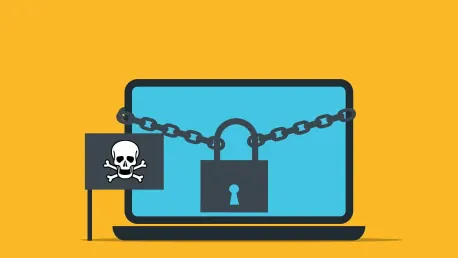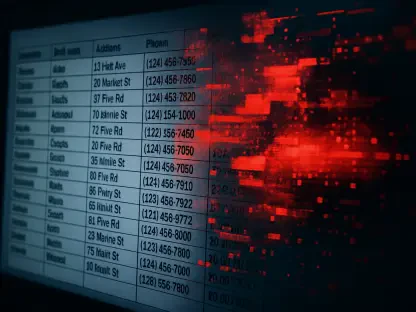In the constantly evolving landscape of cybersecurity, few would expect Portable Network Graphics (PNG) files to become a significant threat. However, recent discoveries have underscored how even everyday file formats can harbor insidious dangers. PNG files, known for delivering high-quality images with lossless compression, are now being scrutinized for the potential risks they pose. The revelations about vulnerabilities associated with PNG files represent a significant shift in how we approach cybersecurity around digital graphics formats.
The Common Vulnerabilities and Exposures (CVE) database catalogs publicly known cybersecurity flaws, and recent analyses have shown that PNG files can be exploited by inserting malicious code. This revelation has opened up new avenues for hackers seeking to infiltrate systems under the guise of harmless image files. Such findings underscore the importance of heightened security measures and have prompted a reevaluation of how supposedly benign digital content is handled. As the digital age progresses, safeguarding even the most basic file types remains critical to ensuring comprehensive cybersecurity.
Understanding the Risks of PNG Files in Cybersecurity
PNG files are a staple in digital communication and design, primarily because of their high image quality and efficient use of data. Nonetheless, their inherent ability to encode complex data streams has made them an attractive target for cybercriminals. Malicious actors can manipulate these files to include harmful scripts, which, when executed, may lead to severe consequences such as data theft, system infiltration, and other disruptive activities. This transformation from a reliable image format to a potential cyber threat highlights the dynamic nature of vulnerabilities in modern digital content.
Databases like the CVE have brought these vulnerabilities to light, listing specific weaknesses found in PNG files. These listed vulnerabilities create a roadmap for cybercriminals, enabling them to exploit the highlighted flaws systematically. Awareness of these dangers allows cybersecurity experts to predict and mitigate potential threats before they cause significant damage. By understanding the risks associated with PNG files, cybersecurity professionals can develop more effective strategies to safeguard systems against this unconventional entry point for cyberattacks.
The Role of Advanced Analysis Technologies
The emergence of advanced technologies has revolutionized the field of cybersecurity, particularly in the analysis and identification of vulnerabilities. These technologies enable experts to compare and scrutinize CVEs associated with PNG files more effectively. By leveraging sophisticated tools designed to detect specific weaknesses in file formats, cybersecurity professionals can craft more comprehensive defense mechanisms. This enhanced capability to pinpoint and address vulnerabilities represents a proactive approach to mitigating risks that PNG files may pose.
State-of-the-art analysis tools use algorithms and data-driven methods to identify potential threats within PNG files. By doing so, they allow for the creation of targeted security measures that address the unique challenges presented by these files. Furthermore, this technology-driven approach helps to refine existing cybersecurity strategies, making them more robust and adaptable to evolving threats. As vulnerabilities in PNG files become better understood, ongoing advancements in analysis technologies will be crucial in maintaining effective protection against these emerging risks.
Practical Security Tips for Handling PNG Files
To reduce the likelihood of falling victim to threats embedded in PNG files, it is vital to adopt practical security measures. One of the most effective strategies is to ensure that all software used to open and process PNG files is frequently updated. Regular software updates often include patches for known vulnerabilities, thus reducing the risk of exploitation by cybercriminals. Additionally, conducting regular training sessions for employees on recognizing and avoiding suspicious files is essential in cultivating a vigilant organizational culture.
Another critical measure is the use of robust antivirus and anti-malware software. These programs should be configured to scan all PNG files before they are accessed, providing an extra layer of security by detecting potential threats. Furthermore, employing sandboxing techniques, where unknown files are opened in a controlled environment, can prevent malicious code from affecting the primary system. By adopting these practical tips, organizations can significantly enhance their defenses against cyber threats lurking within PNG files.
The Future of PNG File Security
As digital content continues to dominate all aspects of our lives, securing files like PNGs becomes increasingly important. The cybersecurity landscape is in a constant state of flux, with both threat actors and security measures evolving rapidly. The newfound vulnerabilities in graphics files like PNGs signal a crucial shift toward preemptively addressing cyber threats in what were previously considered safe formats. This evolution in understanding cyber risks demands that we stay ahead by continually refining our security practices.
Looking ahead, innovations in cybersecurity promise to offer more advanced solutions for safeguarding digital interactions. AI-driven anomaly detection systems are poised to play a significant role, offering more intuitive and automated security measures to counteract subtle and hidden threats. The ongoing development of these technologies highlights a move toward more sophisticated and proactive security practices, essential for protecting against evolving cyber threats.
Conclusion
In the ever-changing realm of cybersecurity, it’s surprising to learn that Portable Network Graphics (PNG) files could pose a significant threat. Recent findings have highlighted that even common file formats can hide dangerous threats. PNG files, typically recognized for their ability to deliver high-quality images with lossless compression, are now under scrutiny due to potential security risks. Discoveries about vulnerabilities in PNG files signal a crucial shift in our approach to cybersecurity concerning digital graphics formats.
The Common Vulnerabilities and Exposures (CVE) database records publicly known cybersecurity flaws. Current analyses reveal that PNG files can be exploited by embedding malicious code. This discovery offers new opportunities for hackers to infiltrate systems disguised as harmless image files. Such revelations emphasize the need for heightened security measures and have led to a reevaluation of how benign digital content is managed. As our digital world advances, protecting even basic file types remains essential to achieving thorough cybersecurity.









